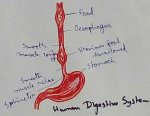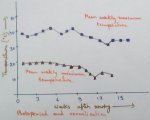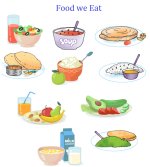Worksheet on Birds and its Food Habits
Worksheet on birds and its food habits contains various types of questions on feathers of birds, different types of beaks as well as movements of birds.
Read the concept to answer the questions on birds and its food habits.
I. Fill in the blanks:
(i) Birds use their _________ to fly.
(ii) Birds have strong _________ to flap their wings.
(iii) A bird uses its _________ to turn while flying.
(iv) The feathers of birds are of _________ kinds.
(v) Birds have a _________ to eat.
II. Write true for
the correct and false for the wrong statements:
(i) Most birds fly.
(ii) A heron has a long, pointed beak.
(iii) Ducks have webbed feet to swim.
(iv) A parrot cannot crack nuts.
(v) Crows perch on trees.
(vi) There are a few kinds of birds.
III. Answer the following questions:
(i) What helps a parrot to climb a tree?
(ii) What helps a crane to wade?
(iii) What are the main uses of the feet and claws of a bird?
(iv) Why does a crow not fall down from the tree while sleeping?
(v) Which birds have webbed feet? How are webbed feet useful to them?
IV. Match the columns:
(i) Strong curved beak (a) unable to fly
(ii) Sharp pointed beak (b) duck
(iii) Broad, flat beak (c) sparrow
(iv) Short, pointed beak (d) woodpecker
(v) Ostrich (e) parrot
Check the answers of worksheet on birds and its food habits:
Answers:
I. (i) wings
(ii) muscles
(iii) tail
(iv) three
(v) beak
II. (i) true
(ii) true
(iii) true
(iv) false
(v) true
(vi) false
III. (i) Parrots have two toes pointing upwards and two toes pointing downwards these helps them to climb a tree.
(ii) Cranes have long, thin legs with unwebbed spreading toes these help them to wade.
(iii) The main uses of the feet and claws of a bird is to catch their food and also to protect them from their enemies.
(iv) Crows have three toes in front and one toe at the back these help them to grip branches so tightly that they do not fall down from the tree while sleeping.
(v) Ducks have webbed feet. Webbed feet useful to them for swimming
|
IV. (i) Strong
curved beak (ii) Sharp pointed beak (iii) Broad, flat beak (iv) Short, pointed beak (v) Ostrich |
(e) parrot (d) woodpecker (b) duck (c) sparrow (a) unable to fly |
• Birds: Feeding habits, Nesting and Hatching
Worksheet on Birds and its Food Habits
Worksheet on Birds and its Feeding Habits
Worksheet on Nesting and Hatching of Birds
From Worksheet on Birds and its Food Habits to HOME PAGE
Recent Articles
-
Eleventh Grade | Eleventh Grade Science | Eleventh Grade Math
Jun 27, 25 12:26 AM
Eleventh grade biology has been designed in accordance with the recommended topics. We will cover all the topics in biology very exciting and interesting way. -
Explain Digestion of Food | Salivary Glands | Oesophagus | Stomach
Jun 27, 25 12:20 AM
Before the digestion is start by the different enzymes secreted from the different digestive glands food must be turned and chut or mixed with saliva inside the mouth. -
Explain Human Digestive System | Mouth | Tongue | Pharynx | Teeth
Jun 21, 25 01:15 PM
Digestive system is a system of alimentary canal and digestive glands. Alimentary canal- alimentary canal is a tube of variable diameter having muscular wall and glandular epithelial tissues which sta… -
Vernalisation in Plants | Definition | Mechanism | Devernalization |
Jun 18, 25 01:34 PM
Definition of vernalisation- The change of flowering habit due to the low temperature treatment is known as vernalisation. This is a physiological process which was denoted by Clipart in 1857 invite b… -
The Food We Eat | Food we Get from Plants and Animals | Carbohydrates
Jun 15, 25 03:20 PM
What are the food that we should eat? Find out the names of ten food items in the word maze. Write the names in the correct column of the table given below. Food we get from plants Food we get from an…




New! Comments
Have your say about what you just read! Leave me a comment in the box below.